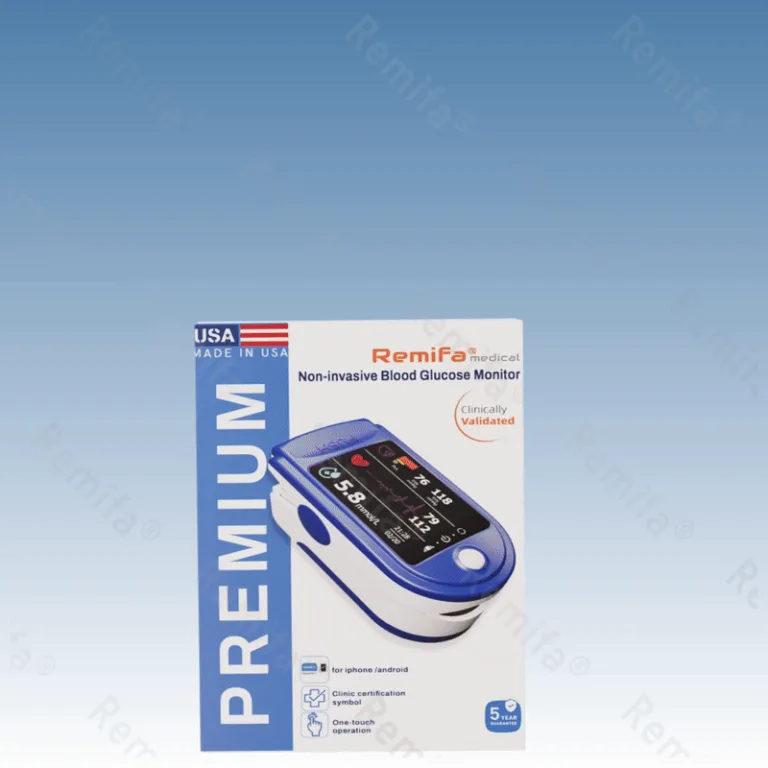If you’re tired of finger pricks, strips, and all the drama that comes with traditional blood sugar monitoring, you’re not alone. The buzz around the Clinclii™ Non-Invasive Glucose Monitor is growing louder every day. But here’s the real question: Is it legit, or just another fancy gadget promising the moon and stars?

Let’s break it all down in this comprehensive, no-nonsense review. Whether you’re diabetic, pre-diabetic, or just someone who cares about health, this one’s for you.
What is the Clinclii™ Non-Invasive Glucose Monitor?
The Clinclii Non-Invasive Glucose Monitor claims to measure your blood sugar levels without the need for needles, strips, or pain. Yep, no pricking your finger 4 times a day. It’s designed to be worn like a smartwatch and uses modern tech—optical sensors, infrared light, and smart algorithms—to track glucose.
Sounds revolutionary, right? But does it actually work?
Who Is It For?
Before diving into the tech, let’s talk about who might benefit the most:
- Type 1 & 2 diabetics tired of traditional monitoring
- Pre-diabetics wanting to track levels daily
- Fitness enthusiasts or biohackers tracking wellness
- Parents of diabetic children
- Anyone afraid of needles
If you fall into one of those categories, this device might be worth a closer look.
How Does It Work?
The Clinclii monitor uses infrared spectroscopy and biosensors to read glucose levels through your skin. This method avoids blood entirely and supposedly offers real-time data.
In simple terms? It’s like a fitness tracker, but for blood sugar.
The Process:
- Wear it on your wrist like a regular watch
- Let the sensors scan your glucose levels through your skin
- View readings in the connected mobile app
- Track trends, set alerts, and even share data with your doctor
But we have to ask—can it really see through skin?
Is It Clinically Tested?
Now here’s the tricky part. Most devices like this, especially the medical ones, go through FDA approval or clinical trials. But Clinclii doesn’t list any verified regulatory approval or certifications clearly on their website.
They use phrases like “advanced technology” and “trusted by users worldwide,” but without hard data or published studies.
That’s a bit of a red flag.

What Are Customers Saying?
Let’s talk about the real-world experience. We dug into user reviews and here’s what we found:
Positive Reviews:
- “Game changer for my daily routine.” – Many users loved ditching the finger pricks.
- “The readings were accurate enough for lifestyle tracking.” – Some reported close numbers when compared to their regular glucometers.
- “Very easy to use.” – Seniors and tech-averse users found it simple.
Negative Reviews:
- “Not medical-grade accurate.” – A few users noticed discrepancies in readings compared to their traditional devices.
- “Shipping took forever.” – Some reported delays in receiving their orders.
- “App crashes frequently.” – Mobile app stability seems inconsistent.
In a nutshell, it works okay for general monitoring, but not something you’d solely rely on for insulin dosing.
Let’s Talk Accuracy
Accuracy is everything when it comes to glucose monitoring. One wrong number could mean serious health consequences.
Most reliable monitors are off by 5-15%, which is acceptable under medical standards. The Clinclii device reportedly shows a 20–25% variation in some cases. That might be fine for wellness tracking but risky for tight glucose control.
Would you trust your insulin dose to an estimate? Probably not.
Setup and First Impressions
Unboxing the Clinclii is like getting a smartwatch:
- Sleek design
- Silicone strap
- Charging dock
- Quick-start guide
Setup is easy. Just pair the device with the Clinclii mobile app, enter your health data, and you’re good to go.
The learning curve? Super low. Even your grandma could use it without frustration.
Design and Wearability
Looks-wise, it’s clean and minimal. The band is soft, adjustable, and looks like a fitness tracker. No bulky hardware, no wires.
You can wear it all day without feeling weighed down.
But comfort aside—remember this isn’t a smartwatch. It’s built for glucose monitoring, not answering calls or tracking your steps.
Battery Life
Battery life is solid. On average:
- 2–3 days of battery per charge
- 1-hour charge time
Not too shabby. For a health device, that’s on par with most wearables.
Pros and Cons
Let’s lay it all out simply:
Pros:
- No needles or strips
- Comfortable and easy to use
- Syncs with app for tracking
- Non-invasive, pain-free
- Good for casual monitoring
Cons:
- Not 100% accurate
- No verified FDA approval
- May not replace traditional glucometers
- Delayed shipping times
- Some app glitches
Is It Safe?
In terms of safety, it’s a non-invasive device, so it doesn’t pierce the skin or introduce anything to your body. That’s a win. But the lack of regulation means you should treat it as a supplementary tool, not a replacement for doctor-prescribed monitors.
Pricing: Is It Worth The Cost?
The Clinclii monitor isn’t cheap, but it’s also not outrageously priced compared to ongoing costs of test strips and lancets.
Current Pricing (as listed by various sources):
- Regular Price: Around $119–$149
- Occasional Discounts: Down to $89 or less
There are no recurring costs like strips or replacement needles, which is a big plus long-term.
But again, if you’re not getting medical-grade accuracy, even a small investment may feel wasted for some.

Refund and Return Policy
They claim to offer a 30-day return policy, but some users said customer service was slow to respond or unhelpful during return requests.
Before purchasing, read the fine print. If you’re skeptical, use PayPal or a credit card with purchase protection.
Is the Clinclii Monitor Legit?
Let’s be real here.
Clinclii is a legit product—in the sense that it exists and works to some extent. But “legit” doesn’t mean “medically reliable.” It works as a general wellness tracker, especially for people who want a daily view of glucose trends, not exact numbers.
If you’re hoping to ditch your regular meter completely, this might not be the golden ticket. But if you want a pain-free way to stay informed and spot patterns? It could be a helpful tool in your health toolbox.
Should You Buy It?
Here’s the bottom line:
Buy It If:
- You hate finger pricks and want a general overview
- You’re managing prediabetes or wellness goals
- You want a tech-forward supplement to your current routine
Skip It If:
- You need exact numbers for insulin dosing
- You require a doctor-recommended, FDA-cleared device
- You expect top-notch customer support
Alternatives to Consider
Not sold on Clinclii? Here are a few better-established alternatives:
- Dexcom G7 – FDA-approved continuous glucose monitor
- Freestyle Libre 2 – Highly rated, accurate, wearable monitor
- Apple Watch (with third-party glucose accessories) – Fitness + wellness combo
These are pricier but offer more peace of mind if accuracy is your top priority.
Final Verdict
The Clinclii™ Non-Invasive Glucose Monitor is an exciting idea. It taps into the future of needle-free diabetes management, and for many, it’s a step in the right direction.
But here’s the truth—it’s not a full replacement for traditional meters yet. Think of it as a backup dancer, not the star of the show. If you’re okay with that, it might be worth trying.
Just go in with realistic expectations and don’t ditch your glucometer just yet.
FAQs
1. Is the Clinclii Glucose Monitor FDA approved?
No, Clinclii has not listed any FDA approval or certification. It should not be used as a replacement for medically approved glucose monitors.
2. Can I use Clinclii to dose my insulin?
No. The device isn’t accurate enough for insulin dosing decisions. Use a traditional glucometer or CGM for that purpose.
3. How often should I wear the Clinclii device?
You can wear it daily for ongoing monitoring. It works best when worn consistently throughout the day for pattern tracking.
4. Does Clinclii work for both Type 1 and Type 2 diabetes?
Yes, but it’s more suited for casual monitoring. People with Type 1 diabetes requiring precise insulin management should rely on FDA-approved options.
5. Is the Clinclii device waterproof?
It may be water-resistant, but not fully waterproof. Avoid wearing it in the shower or while swimming to preserve functionality.